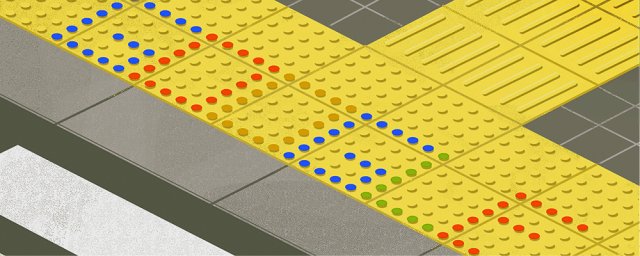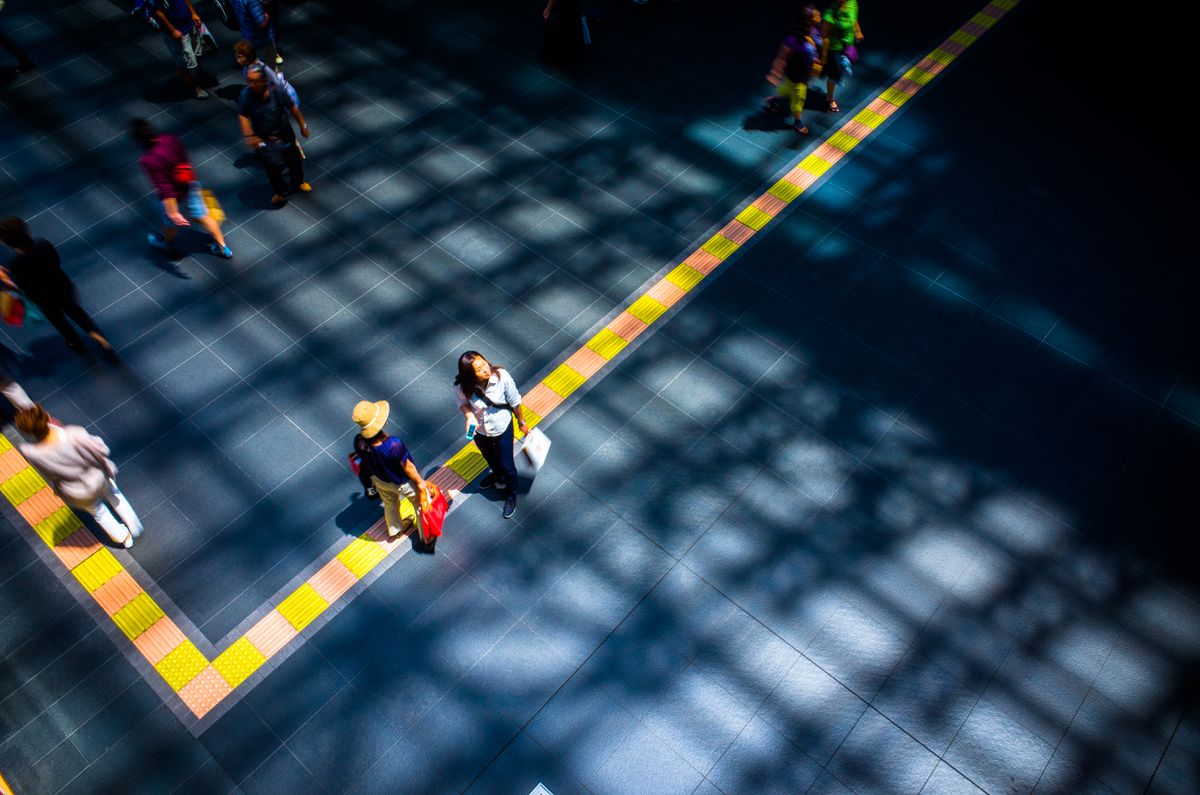Google Doodle Celebrate Japanese Honors Inventor Seiichi Miyake for the Tactile Pavement

Today's Doodle features the bright yellow blocks used in the original paving, which help the visually impaired safely navigate their way around urban spaces. Born in 1926, Miyake died in 1982, aged 56.
The work of pioneering Japanese inventor Seiichi Miyake is being honoured by today’s Google Doodle. Miyake began developing the idea in 1965 because he wanted to create something useful for a newly visually-impaired friend.
Miyake began developing the idea in 1965 because he wanted to create something useful for a newly visually-impaired friend. On March 18, 1967, workers installed Miyake's "Tenji blocks," as he called them, on a street outside the Okayama School for the Blind in Okayama City, Japan. Gradually, other cities in Japan started using them at crosswalks and other potential hazards, and in the 1970s, the Japanese National Railways made them mandatory at its facilities. By the 1990s, they had spread to Australia, Canada, the United Kingdom, and the United States.
In the U.S., the Americans with Disabilities Act, passed in 1990, requires tactile paving at crosswalks where pedestrian ramps have been cut out from the curb, boarding platforms for trains, and certain other places.
In the U.S., the Americans with Disabilities Act, passed in 1990, requires tactile paving at crosswalks where pedestrian ramps have been cut out from the curb, boarding platforms for trains, and certain other places.
If you've walked around a city lately, you may have noticed sections of paving with raised dots or bars, especially at transit boarding platforms or crosswalks. Those bumpy patterns in the pavement are meant to act as warning signs to visually impaired people, who may feel them through their shoes or with the tip of a cane; trained guide dogs can also recognize the bumps.
The panels, initially known as tenji blocks, before being made mandatory by the country’s rail network a year later.
This led other cities across Japan, including Tokyo and Osaka, to develop tactile paving in the following years.
This led other cities across Japan, including Tokyo and Osaka, to develop tactile paving in the following years.

The most common types of tactile paving include raised lines or domes. The former design indicates that it is safe to walk on a particular path, while the latter acts as a ‘stop’ sign to alert users to potential dangers.
Although the tiles have been produced in various colours, they are often coloured yellow to help users who are partially blind.
Although the tiles have been produced in various colours, they are often coloured yellow to help users who are partially blind.
According to Truncated Domes Depot, the bumps are alternatively known as “truncated domes, tactile warning systems, or detectable warning tiles, or tactile pavement.”
Miyake was inspired to create the tactile warnings systems in part out of a worry that visually impaired people could be injured boarding trains.
The bumps functioned almost like a traffic light. They are basically a signal to stop or go. They aren’t for traction per se.
The first pattern “was a series of lines” that indicated to visually impaired people that it was safe to keep moving forward, according to Truncated Domes Depot. The second distinct pattern of lines contained what were called “truncated domes” and suggested to the visually impaired person that they should stop.
The bumps functioned almost like a traffic light. They are basically a signal to stop or go. They aren’t for traction per se.
The first pattern “was a series of lines” that indicated to visually impaired people that it was safe to keep moving forward, according to Truncated Domes Depot. The second distinct pattern of lines contained what were called “truncated domes” and suggested to the visually impaired person that they should stop.
in the U.S., though, only the second type of pattern is used, the site reports. Mashable reports that the circles “mean an impending hazard,” and the lines are meant to be like “a compass.”
In addition, 80 percent of the visually impaired have some sight – perhaps they can sense different shades – and the blocks also assist them because they stand out from the pavement, according to a study on Japanese use of the tactile blocks.
A number of different patterns have been designed since, with smaller raised dots or more pill-shaped bumps signifying different directional cues around the world. For instance, when the raised lines are horizontal in the direction of travel, that might mean "look out for steps ahead".
All of those cues, which many may not even notice as they wander through a city, are incredibly important for those with limited vision.
All of those cues, which many may not even notice as they wander through a city, are incredibly important for those with limited vision.
While the latest Google Doodle features the bright yellow used in the original paving, many variations in other colours and patterns have since popped up.
Today’s Doodle depicts the Google logo rendered in the style of Miyake’s tactile blocks, embossed against the familiar yellow background.
Facebook:Liberex Official
Instagram:@Liberexlab
Pinterest:Liberex Official
Twitter:@Liberex Official


评论
发表评论